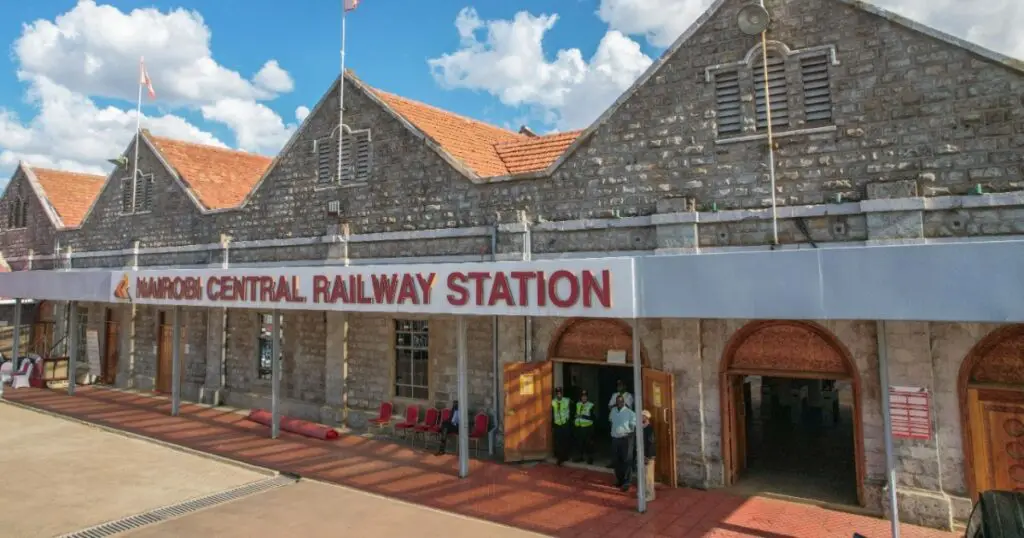- Kenya and Britain have partnered to launch the Nairobi Railways City project, a KSh 30 billion transit-oriented and multi-modal urban Development within the Central Business District of Nairobi
- The infrastructure project will integrate the Nairobi Integrated Urban Master Plan, Nairobi Transport Master Plan, and Nairobi Commuter Rail Master Plan
- Britain has also pledged KSh 11.9 billion to construct office blocks, malls, and light industries within the project, which are meant to decongest the city and create new job opportunities
Kenya has partnered with Britain to launch the Nairobi Railways City project, a multi-billion transit-oriented and multi-modal urban Development within the Central Business District of Nairobi City.
The Nairobi Railways City project will cost an estimated KSh 30 billion and will integrate the Nairobi Integrated Urban Master Plan, Nairobi Transport Master Plan, and Nairobi Commuter Rail Master Plan.
The project will be developed in two phases on the 425 acres of government land bordering Uhuru Highway, Ladhies Road, Bunyala Road and Haile Selassie Avenue.
Still within the Nairobi Railways City project, Britain has also pledged KSh 11.9 billion to construct office blocks, malls, and light industries as part of the project, which are meant to decongest the city and create new job opportunities.
The railways city project is part of the larger KSh 225 billion climate-oriented funding by the UK, with the repayment of the loan anchored on the developments around climatic changes in the region.
How the Nairobi railways City Project will benefit Kenya
An expert review from Cytonn Investments indicates that the project’s main objectives are to maximize focus on the Affordable Housing Initiative (AHI) by providing space to construct 10,000 affordable housing units in the first phase.
It also aims to create a Transit Oriented Development (ToD) to support usage of the Nairobi Commuter Rail.
The project will also provide a livable and Sustainable Urban Space through the creation of green public spaces and an efficient railway system.
It would also minimise urban congestion and traffic delays by integrating a non-motorized transport system and modern matatus terminus linked to Bus Rapid Transit Network (BRTN).
The Nairobi Railways City project will also regenerate the Central Nairobi City into an eco-friendly environment by incorporating the latest green building technology, keeping track of Kenya’s ambitions on sustainable climatic strategies.
Read more: Infrastructure development accelerates Kenya’s economic revolution
“It would also foster activity in the region’s retail sector by establishing affordable spaces for small and medium enterprises, which will provide increased market opportunities for retailers,” Cytonn said in a recent report.
Additionally, the project would also establish an iconic economic development to position Nairobi as a thriving continental metropolis and serve as a template for other projects that Britain seeks to implement further in Africa.

Cytonn said that upon completion of the Nairobi Railways City project, the real estate sector would perform positively, supported by factors that include increased developments in the industrial, residential, commercial and retail sectors. It would also be supported by the growth of urban developments in areas surrounding the Railway city and the positive growth in property values of regions around the project.
Other factors that will support the performance include increased investor confidence and attraction of more foreign investors into the project hence speeding up the performance of the economy, and the creation of regional metropolises with the project linking to other upcoming smart cities like the Northlands City and Tatu City in Kiambu County, and Konza City in Machakos County.
Challenges infrastructure projects face in Kenya
According to the analysis, there are various challenges that the implementation of the project could face.
Cytonn noted that in as much as the funding of the Nairobi Railways City project has been achieved, the crucial challenge will be on the implementation of the project to the end and management of the project to be a sustainable initiative for the country.
“Such projects have proved to incur high operating costs and inadequate economic benefits due to mismanagement of public investments and lack of reasonable planning control of the land uses.”
The investment firm, therefore, challenges the government to implement a raft of measures, including establishing a dedicated government agency to oversee the development and management of the railway city, including the recruitment of seasoned and proficient personnel to assist in the planning and budgeting process.
It also recommends the government to provide financial incentives and grants to local developers to encourage the construction of the city and to help create jobs.
The investors also want the government to develop a comprehensive transportation plan to ensure the efficient movement of goods and people in the city and establish a clear regulatory framework to ensure proper enforcement of building codes, safety standards, and quality of life standards in the city.
“They should also optimise the management of areas around the project in the preliminary stages of the project through guaranteeing reasonable, economical, and efficient use of land, and formulate strategies on sourcing for more funds early enough for managing and operating the project before it is completed.”











